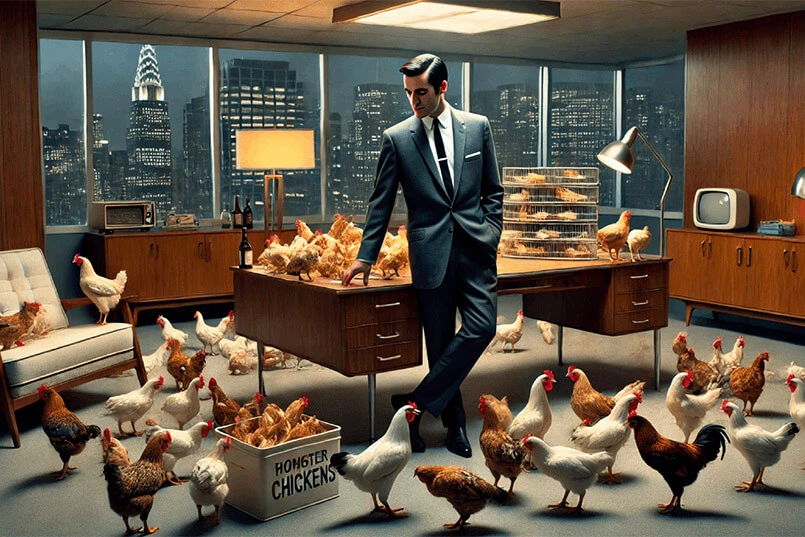Jeremy Taylor spent a week in May 2021 attending the AdForum Consultants Summit, on the receiving end of nine full credentials presentations from some of the leading global advertising networks and from some up and coming independents.
One of the tasks set for the agency teams was to persuade the audience that their business represented the future of advertising. But before anyone can do that, they need to solve an argument about exactly what is covered by the word ‘advertising’ itself.
Agency structures are adapting
The Pandemic has caused most businesses to reconsider their structure so that they can be best placed to cope with the revised demands of their customers. This has affected marketing departments as much as any other part of the business and agencies have had to change to reflect these new pressures.
18 months ago, every agency network was stressing pretty much the same story. They were all about the creative work of course, but keen to tell clients how the creative product was supported by world-class data and customer intelligence to inform the creative work; and a top-ranking IT platform which would support the production of the work and the increasing demand for multiple variations and detailed content production.
Now, those three disciplines are the minimum baseline and it’s assumed that every agency can do these things. The battle lines have moved on to the world of integration – a demonstration of how clients can get a fully integrated service from the one agency, across every implementation discipline. The seamlessness of the solution is where the battle is fought for client attention, and there are many alternative approaches to cracking this particular nut.
What are agencies in the business of selling?
Here is the dilemma. Agencies almost universally say that they are in the business of selling creativity. But they also (almost) all believe that you can’t put a price on creativity, and will tell you so in their credentials pitch. So what they actually have to sell to clients is the delivery of a creative product – which translates as and as many different executions of a creative concept as the campaign demands.
The delivery process is what the fee is actually based on, so without being cynical about it, it’s very much in the agency’s interest to make that delivery as wide-ranging as it can possibly be – including many national markets and many different disciplines.
And that’s where the new restructuring of the agencies are drawing inspiration. The models that are used cover multiple implementation disciplines – specialist teams of experts in fields like PR, experiential marketing, social media, customer engagement, design, customer experience, loyalty, digital and mobile experience, CRM, and many more. Some familiar and some brand new.
There are also specialist divisions in markets like health. The structures are packaged in different ways (maybe a division, maybe a separate company or group of companies) but there they all are.
The weird thing is that almost all the models also include a division called ‘Advertising’, which sits apart from all these other arms maybe even as a separate brand (there is a lot of development in agency brands too, with mergers, rationalising projects and new names appearing – but that’s a story for another day).
What is it that ‘Advertising’ does that doesn’t take place in these other divisions and advertising companies? And why does it always sit apart as a discipline?
It’s all about the ‘big idea’
When you drill right down to it, there is always the same answer.
The advertising business has a decades-old belief that creativity is centred on the production of ‘The Big Idea’. That is the holy grail of the industry, and the belief is that no campaign can succeed without it. It is not the purpose of this article to argue about that claim, so for the sake of argument let’s assume that it’s true.
The agency group rational argument, as expressed in the credentials presentation, is that the Big Idea can come from anywhere in the group, and they only hire people from any discipline who are able to contribute creatively. Creativity is the DNA of the business. And yet… when you listen to the presenters and look at the structures of the teams, this is plainly not what they believe.
Often, the specialist divisions will have their own creative head and creative teams. Sometimes when a case history is presented, you will hear the phrase ‘The idea behind this campaign actually came from one of our experiential/PR/specialist market teams’. The trouble is that this is clearly something that amazes the presenter and is not the norm. It’s the ‘fish riding a bicycle syndrome’ – it’s not that the result is amazing, it’s the fact that the thing happened at all.
What they clearly believe is that the natural home of the Big Idea is in the advertising discipline. That, when you dig deep enough, the apparent role of advertising is as a separate division in an advertising group – it’s the place where strategy and creative people come together to come up with pure creativity, and the Big Idea.
So what’s the problem?
There is a basic problem with this approach to the group structure. The effect is that it hugely devalues the other disciplines and specialist companies in the eyes of the audience.
The impression the prospective client is left with is that the real value of the agency group sits in the one discipline – something called ‘Advertising’ where the Big Ideas are created.
This is dangerous for the agency group. As we established earlier, they actually get paid fees for the delivery of the big idea rather than the idea itself. Indicating that ‘Big Idea creativity’ actually sits in only one place in the group means that everybody else is only concerned with the delivery of the idea to market, with their creative contribution being restricted to a few clever local market twists and specialist media adaptations.
What does this do? It classes all these skills as secondary ones – subservient to the advertising team and concerned only with detail. These are skills that command a smaller fee – surely a bad place to be when the agency business model is based on selling the time of these teams.
There is an alternative. Why not take the next step towards true integration and accept that the word ‘advertising’ covers all these different specialist skills? The separation of the word into an elitist specialism is a clear throwback to the days of ‘above the line’ and ‘below the line’ – a classification that meant nothing to the consumer and little more to anybody except agency elitists.
That concept is now consigned to the dustbin and notably, many of the newer generations of independents do not recognise the distinction of ‘advertising’ versus everything else within their organisations. To them, it’s all advertising.
Networks might do well to take note that some excellent Big Ideas come out of these challenger-businesses and that the integration story is much stronger told this way. And in reality, isn’t that what most restructured clients really look for in a restructured world?
TrinityP3 has developed a suite of products aimed at increasing your marketing performance to achieve improved business outcomes.




